21 March 2015. Bronte, Oakville, ON. For some thirty five years I have maintained a rather hi-and-miss rolling diary in which I write of notable things happening in the natural world. On this date in 2012 I wrote, “Red-necked Grebes in courtship at Bronte Harbour.” I remember it well; a pair were conducting an impressive side-by-side courtship dance. They ploughed the waters in a series of brief rituals, braying and cooing to each other as they went. Here are a few pictures from that day.
Reading that diary note, I decided to see if they’d returned, hoping of course for another chance to witness that elaborate water-dance. This particular harbour is one of the very few places in eastern North America where Red-necked Grebes breed, and they are so indifferent to the presence of people and their play boats, that their nests are easily observed, sometimes no more than ten metres from shore. Today a few Red-necked Grebes were present, having probably returned from a winter spent along the Atlantic coast. But conditions are quite different this year, as yet there is little open water and the sheltered yacht-basin breeding site is still largely iced over. Among the three or four grebes I found, I could see no sign of pair formation let alone courtship. Once the ice melts it won’t take long though for things to change.
Scanning the yacht basin with its geometric assembly of docks arranged like the halves of a zipper, I found plenty of Redheads – always gorgeous, Lesser Scaup (ditto) and Long-tailed Ducks (ditto). And then, in the distance, a small flock of Gadwall puttering around on an expanse of ice. They were today’s wow! bird. Not because they are particularly colourful, they don’t have any of the splendour of some of their kin: Mallards, Green-winged Teal or Northern Pintails for example. But they have a sort of understated coolness, a disregard for fashion born of self-assurance. Author and ornithologist, Pete Dunne puts it this way; “ Fairly common and conservative, in both attire and social commitment. Males make a fashion statement with tasteful gray….” In the field, one of the most distinctive features of the male is its overall grey appearance, a splash of white in the wing and a coal-black rear end. The female on the other hand is overall greyish brown, not unlike a female Mallard although slightly more streamlined.
I sense that my words are unlikely to make much of a case for a Gadwall Appreciation Society; it’s not that important anyway. I like them a lot and don’t see enough of them, but when I do they make me smile and celebrate inwardly. Enough to be my Bird of the Day. Here are a couple of photos of that group, maybe you’ll find some of what I see in them.
This post contains photos in galleries visible only on the website, not if you’re reading this as an email.
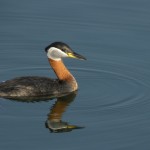
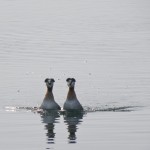
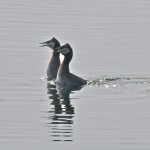
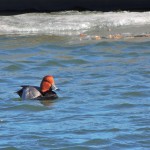
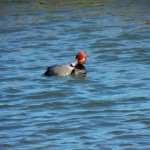
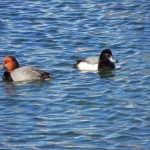
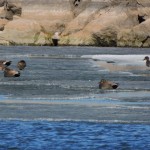
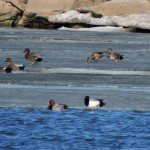
Honestly, a couple of yrs. ago I was oblivious to the variety of birds & waterfowl in our area! So, any that you spot are an exciting opening up of my world!!! Nice spotting & shooting!
Gadwalls are one of my favs – very underrated IMO. I love the silvery feathers – very subtle.